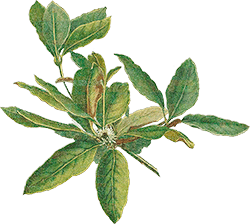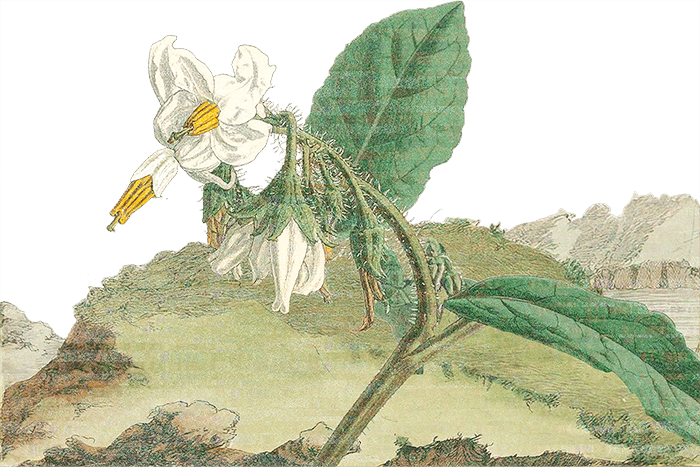On today’s show we learn about the Belin Sweet Pea, a critically endangered flowering legume plant native to the Middle East, specifically the Antalya province, in southern Turkey.
Rough Transcript
Intro 00:05
Welcome to Bad at Goodbyes.
On today’s show we consider the Belin Sweet Pea
Species Information 02:05
The Belin Sweet Pea is a critically endangered flowering legume plant native to the Middle East, specifically the Antalya province, in southern Turkey.
Description
The Belin Sweet Pea has a climbing growth form, meaning the plant’s stems ascend vertically by attaching to external supports (like other plants, rocks, walls, fences) rather than relying on their own structural rigidity to grow upright. The Belin Sweet Pea develops touch-sensitive, specialized leaf structures called tendrils which coil around other plant stems or objects in its habitat facilitating upward growth increasing access to sunlight, crucial for photosynthesis. From ground to full extension the Belin Sweet Pea generally reaches from 1-3 feet in total length.
Its flowers are striking and particularly gorgeous; they develop in a papilionate arrangement. Papilion is the french word for butterfly, and this flower form is so named as it does kind of resemble butterflies. The petals have a distinctive arrangement: there’s a large upper petal called the banner, two lateral petals called wings, and two fused lower petals form the keel. The banner petal in the Belin Sweet Pea grows large and upright with a yellow-ish color marked by reddish arched veins throughout. The wings, which provide a landing platform for pollinators, are bright yellow, and the keel is a paler yellow, a kind of hood, enclosing the flower’s reproductive organs.
Individual flowers roughly measure three-quarters of an inch to one inch in length, have a bright sharp scent and bloom in the summer, roughly June to August.
Reproduction
Though my research did not turn up specific documentation, these floral adaptations suggest the Belin Sweet Pea is pollinated by bees attracted to its rich coloring and scent. Once pollinated, the flowers develop small green, uh, pea pods, this is a legume, a pea plant. The pods are generally less than an inch in length and a quarter inch wide, holding 2-3 seeds (the peas) and are indehiscent, meaning pods do not actively split open upon maturity to release seeds. Seeds are most likely distributed by barochory, that’s by gravity. The pods fall from the flowers and the seeds are released as the pod decays on the ground near the parent plant.
The seeds will remain dormant until the following spring. The Belin Sweet Pea is an annual, meaning it completes its entire life cycle within a single growing season. It sprouts, grows, flowers, produces seeds, and dies, all within one year.
Um, don’t eat these peas. My first thought, looking at the gorgeous flowers of the Belin Sweet Pea, and given its name a “sweet” pea, I assumed they would be delicious. But instead, the peas contain amino acids and aminonitriles that when consumed in abundance can cause a neurotoxic condition reaction resulting in muscle weakness, paralysis, weaken pulse, shallow breathing, and convulsions.
So again, do not eat Belin Sweet Peas.
Habitat
The Belin Sweet Pea is native to southern Turkey in the Kumluca district of the Antalya province, near the village of Belen. Its entire known wild population is concentrated in a less than 1 square mile area, near the D400 expressway.
It is found in shrubby grassland on rocky, limestone hillsides, at roughly 1800 ft above sea level. These are white-ish tan dusty foothills, nestled between the Taurus Mountain, which rise about 5 miles to the north, and the coastline of the Mediterranean Sea, which is about 5 miles to the south.
This is a shrubland of thin soils, populated by low growing vegetation, with open spaces of grasses marked by stands of small trees and areas of bare rugged rock.
Summers are hot and dry with highs averaging in the low 90s°F; winters are cooler and wet with lows in the upper 30s°F. The area receives a moderate amount of precipitation, roughly 50 inches per year with the majority of the rainfall in the winter months.
The Belin Sweet Pea shares its native habitat with:
Starred Agama, Stone Pine, Lycian Asparagus, Bay Lycian Salamander, Slender-stemmed Mullein, Taurus Ground Squirrel, Lycian Ironwort, Eastern Imperial Eagle, Lycian Blue Butterfly, Rockrose, Spear-leaved Sage Bush, Anatolian Lycian Salamander, Scarlet Corn Poppy, Turkish Pine, Eurasian Lynx, Caracal, Bordered Bugloss, Lycian Stonecress, Krüper’s Nuthatch, and many many more.
In The Dream
————
In the dream
To be a lightness on a hillside. To be soft and bright among the jagged stones. To be a flame in a graveyard. To be beautiful. To climb. To nurture small offerings coaxed from sunlight. To promise. To seed.
All of that, all of that,
And
To despair at the whim of giant machines.
In the dream
————
Threats
Historically the Belin Sweet Pea’s population was reduced by overgrazing domestic livestock, which so substantially depleted the area’s vegetation that sometime in the 20th century sections of its habitat was replanted. But it was replanted with coniferous trees whose tall growth form blocked the necessary light needed for the Belin Pea’s survival.
I should note that the Belin Sweet Pea was only recently described, in 1988, and at that time its population had already been reduced to only roughly 5000 individuals. So researchers have had to infer these historic threats, based on current conditions.
In the time since the late 1980s the plant’s primary threat has been human land use and development, specifically infrastructure like roadways and landclearing for the construction of a police station which destroyed roughly 4000 individuals.
Conservation
Neither the Belin Sweet Pea nor its habitat is legally protected. Its seeds have been collected and are conserved off-site at the Aegean Agricultural Research Institute in Menemen, Turkey, at the International Centre for Agricultural Research in Dry Areas in Beirut, Lebanon, and at the Millennium Seed Bank Project at the Kew Royal Botanic Gardens in the UK.
Lastly, and kind of heartbreaking, there are living specimens conserved in three international botanic gardens, but their locations are not publicly disclosed for threat of human poaching.
The Belin Sweet Pea has been considered critically endangered on the IUCN Red List since 2012 and their population is currently in decline.
Our most recent counts estimate that less than 1000 Belin Sweet Pea and perhaps as few as 30 individuals remain in the wild.
Citations 17:02
Information for today’s show about the Belin Sweet Pea was compiled from:
Acta Botanica Gallica v.156 no.3: 455–67. Genç, Hasan, Bekir Yildirim, and Tolga Cetin. 2009. “Contribution to a Karyotype Analysis of Some Lathyrus L. Taxa (Fabaceae) in Turkey.” – https://doi.org/10.1080/12538078.2009.10516170
Crop wild relative. Issue 8 April 2012: 44-45. N. Maxted (2012). “Lathyrus belinensis: a CWR discovered and almost lost” – https://www.pgrsecure.bham.ac.uk/sites/default/files/documents/newsletters/CWR_Issue_8.pdf
Genetic Resources and Crop Evolution v.45, 253–262 (1998). Bennett, S.J., Maxted, N. & Sabanci, C.O. “The ecogeography and collection of grain, forage and pasture legumes in south-west Turkey.” – https://doi.org/10.1023/A:1008657530563
IUCN – https://dx.doi.org/10.2305/IUCN.UK.2019-2.RLTS.T176094A120103864.en
Kew Bulletin. v. 43, no. 4 (1988): 711–14. N. Maxted, and D. J. Goyder. “A New Species of Lathyrus Sect. Lathyrus (Leguminosae: Papilionoideae) from Turkey.” – https://doi.org/10.2307/4129970
Plant Heritage. June 2017. Pitman, L. “Rare plant of the month: June 2017” – https://plantheritage.wordpress.com/2017/06/07/rare-plant-of-the-month-june-2017/
Proceedings of the Royal Society B. v. 271. 2011-5. Gianoli, Ernesto. (2004). “Evolution of a climbing habit promotes diversification in flowering plants.” – https://doi.org/10.1098/rspb.2004.2827
Turkish Journal of Biodiversity. Vol.4 no.1: 53-65. Aydin-Kandemir F, Demir A (2021). Türkiye’de tehlike altındaki türler: IUCN Kırmızı Liste verileri ile tehlike altındaki Fabaceae türlerine yönelik özel bir inceleme. “Endangered species in Turkey: A specific review of endangered Fabaceae species with IUCN Red List data” – https://doi.org/10.38059/biodiversity.832706
Wikipedia – https://en.wikipedia.org/wiki/Lathyrus_belinensis
Music 18:46
Pledge 28:48
I honor the lifeforce of the Belin Sweet Pea. I will commit its name to my record. I am grateful to have shared time on our planet with this being. I lament the ways in which I and my species have harmed and diminished this species. I grieve.
And so, in the name of the Belin Sweet Pea I pledge to reduce my consumption. And my carbon footprint. And curb my wastefulness. I pledge to acknowledge and attempt to address the costs of my actions and inactions. And I pledge to resist the harm of plant and animal kin and their habitat, by individuals, corporations, and governments.
I pledge my song to the witness and memory of all life, to a broad celebration of biodiversity, and to the total liberation of all beings.

